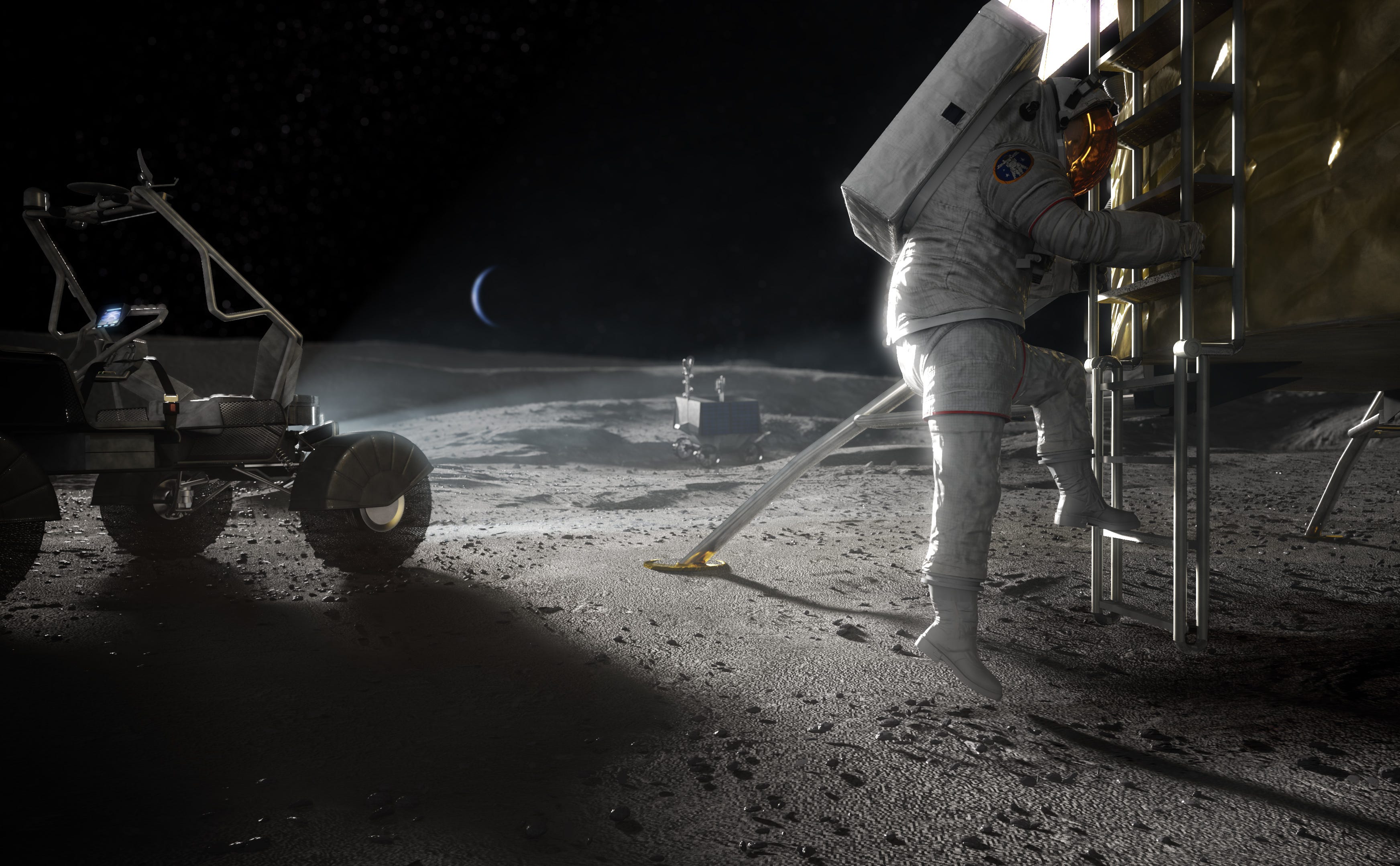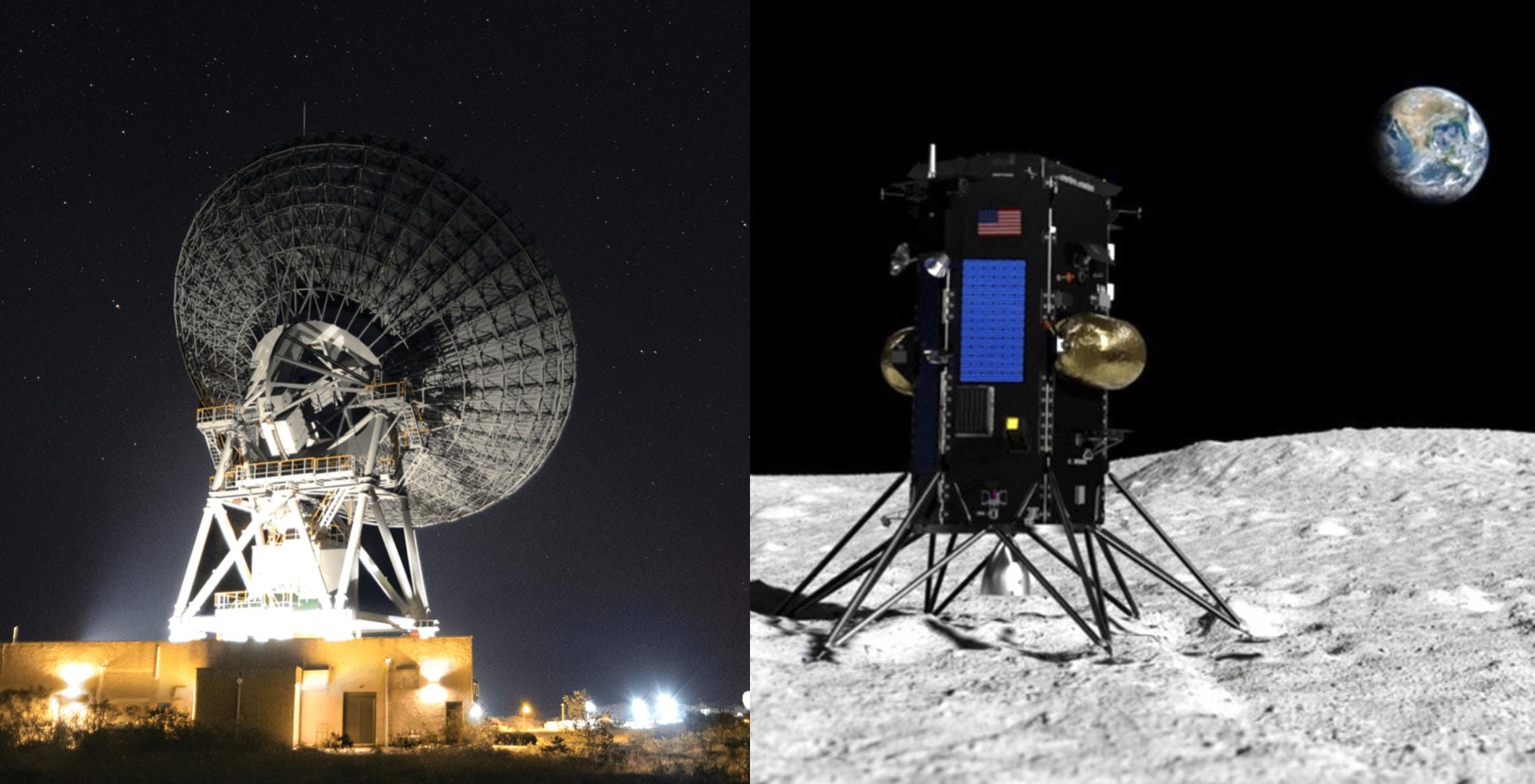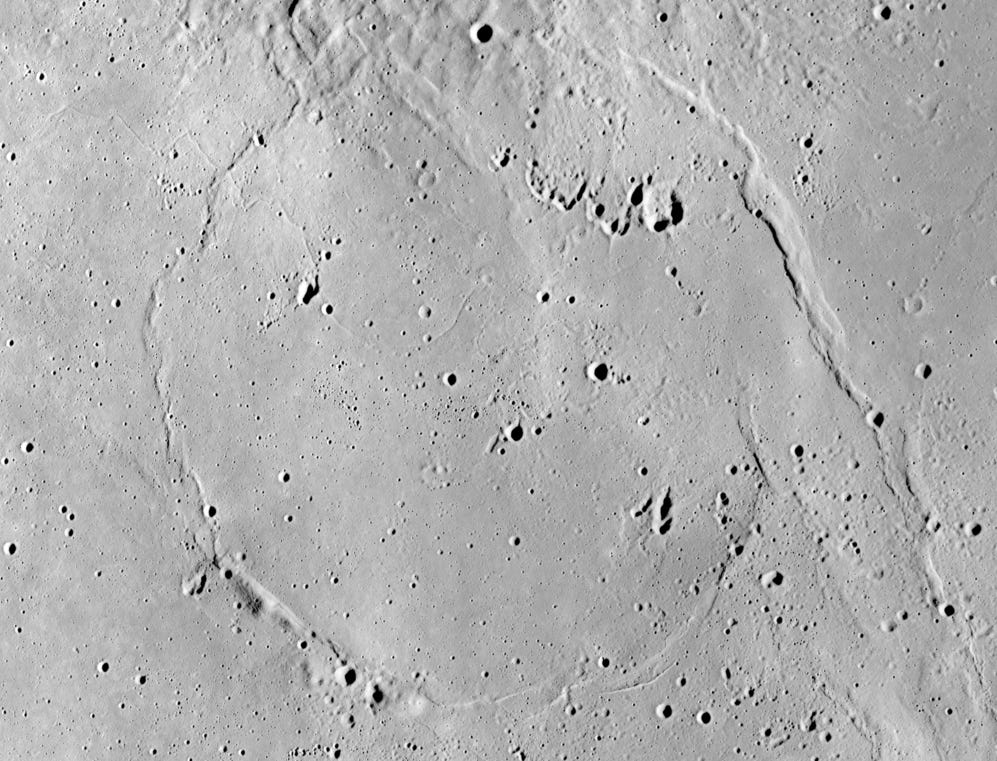Moon Monday Issue #34
NASA envisions commercializing sending people to the Moon, Goonhilly to provide communications for Intuitive Machines' Moon missions, China's Yutu-2 rover finds buried crater on the farside, and more.
Moon Monday crossed 500 subscribers! 🎉
Thank you everyone for reading, to those who gave feedback and shared, and to each supporter who helps keep Moon Monday going not just financially but also in spirit. Thank you also to two terrific newsletters The Orbital Index and The Downlink for inspiring me to write this one. If you like your space curated, technical, and fun, I highly recommend these two.
When I started Moon Monday about 8 months ago, I didn’t think there would be enough happening in lunar exploration and science to report every week but I’m happy to have been so wrong! The weekly archive of lunar developments is filled with hope for the future. Here’s to going forward to the Moon. 🚀
Highlight
NASA has requested proposals from U.S. companies by August 2, 2021 to conduct studies for the Lunar Exploration Transportation Services (LETS) program to routinely ferry Artemis astronauts from lunar orbit to the surface and back. NASA will award up to a total of $45 million by the end of the year to enable the selected companies to mature their crewed lander designs and make them safer.
After getting feedback from companies and with the revised designs in hand, NASA will request proposals in 2022 for recurring mission contracts beyond the first Artemis crewed landing. Much like how we are starting to see commercial flights enabled due to NASA’s Commercial Crew Program, the agency hopes to eventually be just one of many customers purchasing services to transport humans to and from the Moon.

Exploration
Intuitive Machines has signed agreements to get commercial Earth communication services from Goonhilly’s GHY-6 deep space antenna and Morehead State University’s 21-meter space tracking antenna for the company’s first, second, and all future Moon missions. GHY-6 is a former satellite communications antenna refurbished to support deep space missions for NASA, ESA, and commercial endeavors. Morehead’s 21-meter dish (paper) currently serves as an affiliated node on NASA’s Deep Space Network. Since NASA urged CLPS companies to use ground stations outside of the Deep Space Network, these two agreements are the latest additions for Intuitive Machines to their previous deals with KSAT and Parkes.

After conducting a poll, NASA will name their manikin onboard the Artemis I mission Commander Moonikin Campos in honor of the late Arturo Campos, who was part of the mission control team that ensured the Apollo 13 crew returned safely after an oxygen tank failure. The suited manikin Campos will be joining two dummies from ESA onboard the Orion spacecraft. The manikin Campos’ seat will have two sensors—one under the headrest and another behind the seat—to record acceleration and vibration throughout the mission. Five additional accelerometers inside Orion will complement that data, including during the final mission phase of bounced atmospheric reentry and splashdown. NASA and ESA will use these comprehensive datasets to best protect astronauts for Artemis II, the first crewed Artemis mission to the Moon.
The SLS rocket’s assembly slowed down last to last week due to difficulties discovered in hard-mating its core stage to its twin boosters. SLS in on a tight schedule if it’s to fly its maiden mission, Artemis I, this year.
The new “global” Moon rush is but limited to a handful of space-faring countries with substantial resources. The Moon Village Association has a program, MV-PESC, which aims to have other countries explore our cosmic neighbor by helping them to make roadmaps, pitch to stakeholders, get collaborators, and eventually build for space in ways that develops long-term capacity. Ten countries have shown interest so far: Kuwait, Jordan, Egypt, Kenya, Colombia, Mexico, Chile, Nepal, Mongolia, and Thailand. Applications for this year’s round close on July 26.
Science
A whitepaper submitted to the Decadal Survey of 2023-2032—a report produced every 10 years by the U.S. scientific community to guide future NASA missions—emphasizes the Moon’s importance in accomplishing humanity’s science goals. It also provides a great overview of the lunar community’s work in the last two decades, including recommendations from the excellent report of the Scientific Context for Exploration of the Moon.
China’s Yutu-2 rover on the Moon’s farside has found evidence of a buried crater for the first time at the Chang’e 4 landing site in the 180-kilometer-diameter Von Kármán crater. The discovery was made by the rover’s ground penetrating radar, which can identify layers of rock and regolith up to several meters below the surface. Scientists think this buried crater likely contains ancient materials from the Moon’s mantle, which got uplifted during the formation of the nearby Finsen crater and got deposited here. Related paper: The complex, layered history of the Chang’e 4 landing region.

More Moon
Over the last two years, I’ve been writing accessible stories and curating resources on lunar exploration to get people with no space background on the Moon bandwagon that will be this decade! 🚀
If anyone says the Moon is boring,—sighs—send them this.
Everyone, I’m publishing this one-of-a-kind Moon exploration newsletter for free, with no ads. And it will stay that way. If you like my work, support me to keep it going. I accept monthly support via Patreon at various levels as well as one-time donations and other payment options.
